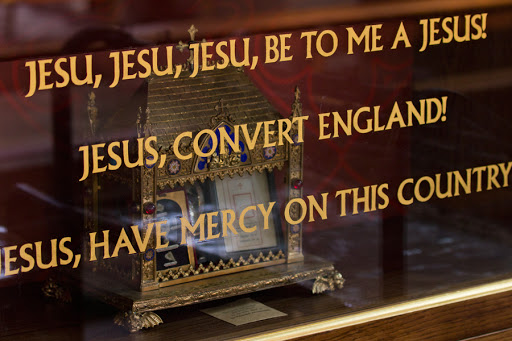A speck of bone, their childhood shoes, even a drop of blood? If anything is distinctive of the devotional practices of the Catholic Church compared to Protestant Christians, it’s the Church's practices surrounding relics.
Relics are the remains of those recognized as saints, whether it is a part of their body (first degree relic), something they owned (second degree relic), or even, though less impressive, objects that have touched a first or second degree relic (third degree relic). Catholics carefully preserve relics, honor them, and even sometimes claim miracles in connection with them.
Catholics insist they are honoring Jesus' servants and in doing so are honoring Jesus. But to many Protestants, the whole practice seems at best very strange, at worst idolatrous, and, either way, in the very least, easily dismissed as just another late medieval corruption of the Catholic Church.
So Protestants (and Catholics) may be surprised to learn that the Church’s beliefs and practices surrounding relics actually come from the Bible and the early Church.
Relics in the Bible
In the Old Testament book 2 Kings, we find an curious story in which God works a miracle through the dead remains of one of his holy servants:
In the New Testament, we find two instances of God working through objects related to holy people. The first comes from the Gospel of Mark and is related to Jesus:
And the second comes from the book of Acts and is related to the Apostle Paul:
We can see in both the Old and the New Testaments the precedence for thinking that God could work miracles through each of the kinds of relics: a first degree relic in the case of Elisha’s body, a second degree relic in the case of Jesus’ clothes, and a third degree relic in the case of the the items Paul had touched. Technically, the Church holds any object related to Christ to be a first degree relic since Jesus is, after all, God incarnate, but the point here is that there is a clear precedence in Scripture for thinking that God could work a miracle through the belonging of a holy person.
Relics in the Early Church
But did the first Christians really take those Scriptures to mean they should start preserving people’s bones?
Yes. St Polycarp, a disciple of the Apostle John and the bishop of Smyrna, was martyred in Rome around the year A.D. 155 and an account was composed soon after known as the Martyrdom of Polycarp, in which we find this passage:
This he said…being ignorant of this, that it is neither possible for us ever to forsake Christ, who suffered for the salvation of such as shall be saved throughout the whole world (the blameless one for sinners ), nor to worship any other. For Him indeed, as being the Son of God, we adore; but the martyrs, as disciples and followers of the Lord, we worthily love on account of their extraordinary affection towards their own King and Master, of whom may we also be made companions and fellow disciples!
Notice that it is the pagan Roman official, at the suggestion of the Devil, who doesn't want the Christians to take relics because the Christians might end up worshiping Polycarp instead of Jesus. And it is the Christians who, while fully conscious of the fact they worship God alone, still want to honor His servants by honoring their relics.
Also notice that the practice is not regarded as novel or controversial among the Christians. In fact, Satan is portrayed as being aware of the fact that Christians preserve and venerate the remains of martyrs, which is why he tries to stop this from happening with the remains of St Polycarp. All of this implies the practice predates St Polycarp’s martyrdom. Since St Polycarp was martyred around A.D. 155, and the last Apostle, John, died somewhere around A.D. 90 to 100, it’s quite possible that the practice of preserving and venerating the remains of the martyrs dates back to the time of the Apostles, and may have had their explicit approval (otherwise, if they had known about the veneration of relics, and if it had been wrong, they would have told people not to do it).
There are many other examples from the early Church of Christians preserving and venerating the relics of Christians who had died, but St Jerome in the 4th century sums of the sentiments of the early Church the best:
The early Christians saw the veneration of relics not only as not in competition with their unique worship of God but as an important part of it.
So What’s Really the “Late Corruption”?
The Catholic beliefs and practices surrounding relics are based firmly on Scripture and the practices of the early Church. Catholics venerate relics today just as Christians have be doing since the earliest times of the faith. Ironically, this means the Protestant rejection of relics is the late corruption of the faith, while the Catholic practice is in fact representative of original Christianity.
No doubt, as with anything good, the veneration of relics can be abused, but the wholesale rejection of it by Protestants is an overreaction, “throwing out the baby with the bathwater.” Catholics, on the other hand, should confidently carry on with their good and holy veneration of relics – and perhaps reintroduce their Protestant brothers and sisters to the ancient Christian practice.

